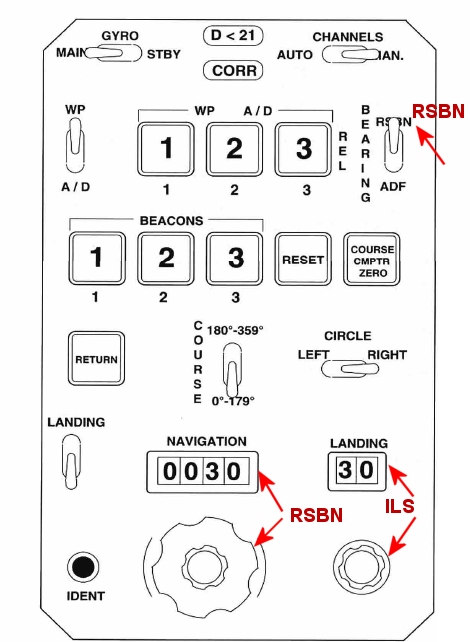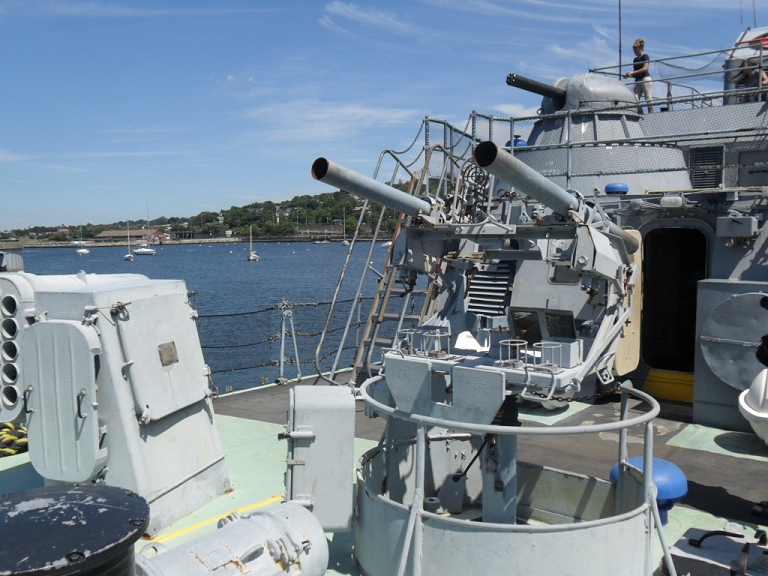-
Posts
933 -
Joined
-
Last visited
Content Type
Profiles
Forums
Events
Everything posted by Seaeagle
-

Air-launched antiship missiles question
Seaeagle replied to PoorOldSpike's topic in DCS: Combined Arms
Its the most common one anyway - there is also the French Exocet. I don't know anything about Chinese ASMs, but the most powerful air-launched Russian antiship missile would probably be the Kh-22 - a very large missile deployed by bombers such as the Tu-22M "Backfire" and the Tu-95 "Bear". But Kh-35 and Kh-31A are more common given their much smaller size and, like the above mentioned NATO missiles, can be deployed by just about any type of aircraft - the subsonic Kh-35 in particular, which is so similar to the Harpoon that it gained the unofficial NATO nickname of "Harpoonski" . The ones labelled "antiship" are the ones designed specifically for this purpose and mostly employ guidance similar to modern air-to-air missiles - i.e. inertial navigation followed by active radar homing in order to engage a moving target at long range. Like you said, there are other "air-to-ground" weapons which can be used against ships as well, but they often have a rather short range, which makes them less suitable against properly defended warships - i.e. the carrier aircraft needs to enter their SAM coverage zone in order to deploy them. I suggest to test with the most common ones, for which the AGM-84A/D Harpoon, Kh-35 and Kh-31A would fit the bill. The Kh-31A is also interesting because it(unlike the other two) is a supersonic weapon and therefore presents a different challenge to the ships' airdefences. -
Yes it obviously offers more than just a GPS nav device, but then the Luftwaffe modifications were also just the bare minimum - there are plenty of accounts from Luftwaffe pilots stating the various limitations they faced when operating the aircraft under NATO tactics. But then I suspect it was deliberate - i.e. on behalf of NATO to assess the capability of the MiG-29 in its most common form at the time(most likely adversary scenario). I don't know about that - the SMT is also exported. Anyway, I think there is a tendency on this forum to think that Russia is the only country to restrict information on its military :) .
-
Yeah mine too. I just meant that your struggle with landing the current 29, could be less with the 29K :) .
-
Why not an -SMT then - its much better known and I doubt you would have an easier time getting documentation for the Ukrainian upgrade. Yes I get what you are saying and as such the other one would obviously be easier to make.
-
Yes for example - but my point was that this type of modification is all about "practicality"(often in relation to NATO compliance) and rarely involves any changes to the WCS. I don't know what you meant by "intensely modernized", but in my book this would involve something along the lines of F-16A to F-16AM - for the MiG-29 that would be an MiG-29SMT or the Indian MiG-29UPG...i.e. an actual multirole upgrade.
-
-
Yeah a good suggestion. Personally I would hate for ED to do some obscure national modified 9.12A instead of the original Soviet 9.12. Its never going to be remotely on par with the current mid-2000's bluefor jets anyway and the justification for a "baseline" MiG-29 would exactly be that the original version provides for "historical" scenarios.......I would also have much prefered this approach for the Hornet and Viper(whether 80'ies or 90'ies versions) instead of the post production modified ones. But then there is already a "MiG-29G" in the sim and since this has long since been transfered to the Polish airforce and IIRC now "sports" the very navigation unit in your photos, it would seem to provide a good basis for what you are suggesting. That would have to be something like the "budget" version of the MiG-29SMT(9.18) - other 9.12 modifications have more or less the same nature as the Polish MiG-29s, albeit a few with guided(optical) A/G munitions.
-
The real MiG-29K has fly-by-wire control system, bigger wings, more engine power etc, so a completely different "beast".
-
Yeah its a mess. The ship launched version of the Harpoon is called RGM-84(several variants). For the Russian SSMs; P-700 "Granit" is the complex name, while the missile itself is called 3M45 - NATO reporting name "SS-N-19 "Shipwreck" P-500 "Bazalt" is the complex name, while the missile itself is called 4K80 - NATO reporting name: "SS-N-12" "Sandbox" P-270 "Moskit is the complex name, while the missile itself is called 3M80 - NATO reporting name: "SS-N-22" "Sunburn" A missile complex consists of guidance system(radar, opticals etc.), missile launchers and the missile.
-
Something is seriously wrong with those reflection limits....like a couple of zeros missing.
-
Yes but instead of just adding simplified versions of current FF modules, it would IMHO have been more intersting and a better use of FC3/MAC level of simulation to look at the possibility of doing aircraft types that are curretly out of reach for FF modules. That way there would be a broader appeal beyond the "casual player" target group. I still think ED is jumping to conclusions with the notion that the popularity of FC3 is solely down to its "shallow learning curve" - I think a lot of people bought and played FC3 despite the entry level representation, because it gave them access to the MiG-29, the Su-27, the Su-33 and F-15C :) .
-
How can they "fully model them" without making them FF? I am sure you have also noticed that whenever someone raises a complaint about a system or sensor defeciency of an FC3 aircraft, that the standard resonse from ED is that FC3 is what it is and that they will only address such issues in connection with ASM - i.e. when/if they decide to make a particular aircraft as a FF module. That alone is reason enough to support a FF MiG-29.....or any other FC3 aircraft for that matter. Besides, aside from the F-16 and F-18, FC3 currently "sits on" the most iconic and attractive fighter types in DCS, so even if they already exist in the sim, its a little difficult to see what other possible future candidates could be more profitable for them to take on.....not least considering that a lot of the work(external models, cockpits and PFM) has already been done for all of them.
-
They did adopt the original R-77 officially, but like I said they didn't buy any. It could be that this offical acceptance was in order to support potential export orders. The RVV-AE is not "downgraded" - its just the export name and apparently assembled with imported components. No thats just a coincidence - the development of the R-77-1 and general rearmament program started long before that.
-
If you are refering to the Luftwaffe MiG-29s, then they didn't have one - the Lazur datalink was removed from the aircraft before Luftwaffe got them.
-
Yup - IIRC the R-77 was actually officially adopted for service by Russia in 1994, but they just didn't buy any(aside for a small test batch) for the reasons you mentioned.
-
Yeah I don't know what the deal is with that - it shouldn't. The "MiG-29G" on the other hand could have it - when Luftwaffe inherited the East German MiG-29s they didn't, but they later bought a wing tank kit for them. NP :)
-
There are no conflicting things at all - for once a wiki page is a 100% correct . - The 9.12 did not have the ability to carry external wing drop tanks - only the 1500L centerline one. - The 9.13 was just called "MiG-29" like the first version - but NATO dubbed it "FULCRUM C" Correct - MIG didn't change the designation from 9.12 to 9.13, while NATO didn't change their reporting name from 9.13 to 9.13S There is no ambiguity in this regard - DCS has 3 versions; the original MiG-29 (9.12), the MiG-29G(Luftwaffe modified 9.12) and the MiG-29S (9.13S) with modified radar(including TWS2 mode) and R-77 compatibility.
-
You said: "The Mig 29 9.13 or S version can carry the ARM missiles..." MiG-29 (9.12) FULCRUM A - first version from 1983 MiG-29 (9.13) FULCRUM C - second version from 1986 MiG-29S (9.13S) FULCRUM C - the above with radar mod for R-77 capability from around 1990. Only the MiG-29S (9.13S) can fire ARH missiles.....clear now?
-
If you could get data for a MiG-29M(9.15) then why bother with it - the MiG-29K(9.31) is practically the same aircraft, but is "carrier capable" and can also do inflight refuelling(the M did not have an IFR probe).
-
Well its necessary because.... The MiG-29(9.13) cannot deploy ARH missiles. The MiG-29S(9.13S) is a 9.13 with a modest radar/WCS upgrade making it compatible with the R-77/RVV-AE and as such the only difference between them. Not really. From 9.12 to 9.13 you basically got a little extra internal fuel + wing drop tanks and ECM and from 9.13 to 9.13S you got R-77s - improvements, but not exactly amounting to "modernity".
-
Well I think you might be right about that - at least when it comes to the "modern era". I really don't understand it - I mean why not apparoach this in the same way as they do with the WWII stuff? I don't agree with that - there are plenty of other FF modules that are far less capable than the "baseline" MiG-29 version and a lot less "iconic" as well. I think the 9.12 will do well enough sales wise, but I agree that it would have been a lot better if it came as part of an 80'ies setup with contemporary counterparts instead of just being thrown into the current "modern" pool with only mid-2000 Bluefor counterparts.
-
Ah ok - I was just a little confused :) . BTW on the RBU-6000 - the Pyotr velikiy and Kuznetsov do not have this. The Kuznetsov has two KT-153 launchers(at the rear) for the "Udav-1" system, while the Pyotr Veliky has a single KT-153 launcher(at the front) and two RBU-1000 on either side of the superstructure further back.
-
What model are you talking about?
-
No those are counter meassure launchers - PK-16 at the rear and PK-10 forward of the AK-630s. There is no Strela launcher on the model - this should be situated between the two launchers for the PK-16....see below.





